

Diacritical Marks (Phonics on the Web) Because there are more letter sounds than there are letters in the alphabet, dictinaries use diacritical marks to indicate which phoneme to give to a grapheme; that is, which sound to give to a letter unit.
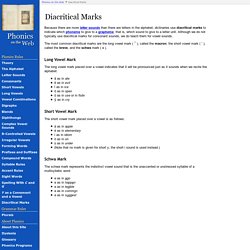
Although we do not typically use diacritical marks for consonant sounds, we do teach them for vowel sounds. The most common diacritical marks are the long vowel mark ( ¯ ), called the macron; the short vowel mark ( ˘ ), called the breve, and the schwa mark ( ə ). Compound Word Lists Complete. Www.southgatems.org/ourpages/auto/2008/9/23/1222197307725/Vocab_L9 _Recognizing Root Words.pdf. Syllabication Rules. How to Teach Closed and Open Syllables. Closed and open syllables are the first two syllable types students should learn.
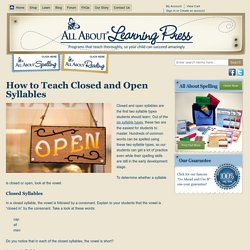
Out of the six syllable types, these two are the easiest for students to master. Hundreds of common words can be spelled using these two syllable types, so our students can get a lot of practice even while their spelling skills are still in the early development stage. To determine whether a syllable is closed or open, look at the vowel. Closed Syllables In a closed syllable, the vowel is followed by a consonant. Cap sit men Do you notice that in each of the closed syllables, the vowel is short? Open Syllables In an open syllable, nothing comes after the vowel. For other examples, look at the first syllables in these words: ba by e ven pa per a ble Do you notice that in each of the open syllables, the vowel is long (says its name)? Why Does It Matter?
Knowing the syllable types will help the student be a much better speller. Inflectional Morphemes_PDF. ENG 411B Concepts. Morphemes consist of bases and affixes, each of which have meaning.
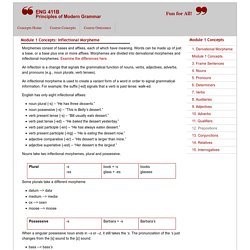
Words can be made up of just a base, or a base plus one or more affixes. Morphemes are divided into derivational morphemes and inflectional morphemes. Examine the differences here. An inflection is a change that signals the grammatical function of nouns, verbs, adjectives, adverbs, and pronouns (e.g., noun plurals, verb tenses). An inflectional morpheme is used to create a variant form of a word in order to signal grammatical information. English has only eight inflectional affixes: Nouns take two inflectional morphemes, plural and possessive.
Some plurals take a different morpheme: datum --> data medium --> media ox --> oxen moose --> moose When a singular possessive noun ends in –s or –z, it still takes the ‘s. Bass --> bass’s maze --> maze’s The possessive of a plural noun ending in –s is pronounced just like the plural form. Five days’ work the taxpayers’ burden. Dolch Sight Vocabulary Words « Mrs. Perkins. Dolch Word Lists Note: Please read "What are Dolch Words?
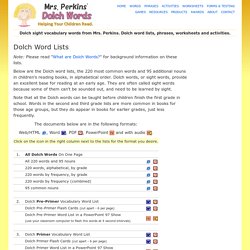
" for background information on these lists. Below are the Dolch word lists, the 220 most common words and 95 additional nouns in children's reading books, in alphabetical order. Img/2013/03/explicit_systematic-phonics.pdf. Archived: What is Systematic and Explicit Phonics Instruction? A r c h i v e d I n f o r m a t i o n Research-Based Instruction in Reading Student Achievement and School Accountability ConferenceOctober 2002.
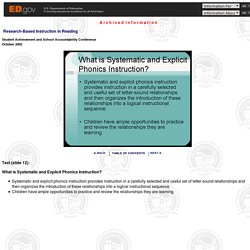
Reading.uoregon.edu/resources/bibr_au_concepts.pdf. Www.ling.upenn.edu/pri/pdfs/RR10.pdf. L controlled1. Ar as in car Teacher Word Cards. R-Controlled and L-Controlled. Diphthongs, Modified Vowels and Vowel Digraphs. Vowel Digraphs Phonics Worksheets. Vowel Digraph Spelling Worksheets: These spelling sheets contain words with the vowel digraphs.
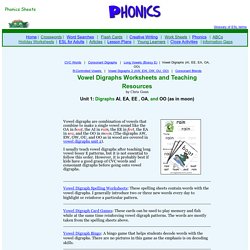
I generally introduce two or three new words every day to highlight or reinforce a particular pattern. Vowel Digraph Card Games: These cards can be used to play memory and fish while at the same time reinforcing vowel digraph patterns. The words are mostly taken from the spelling sheets above. Teaching Blends and Digraphs. Seems like this week there’s been quite a few questions about blends and digraphs.
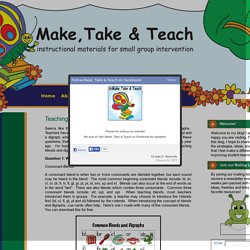
Teachers have been asking and wanting to know what the difference is between a blend and a digraph, which to teach first and the best way to teach these skills. Well, with all these questions, that was motivation enough for me to finish this post that I started literally a year ago. I’m hoping this post can answer some of these burning questions about teaching blends and digraphs.
Question 1: What’s the difference between a blend and a digraph? Consonant Blends A consonant blend is when two or more consonants are blended together, but each sound may be heard in the blend. Click HERE to download this freebie from my TpT store. BLENDS, DIGRAPHS, TRIGRAPHS AND OTHER LETTER COMBINATIONS. Consonant digraphs.
Spell to Write and Read. Decoding for reading; Spelling (encoding) for writing. General information Decoding means translating written words into the sounds and meanings of spoken words (often silently).
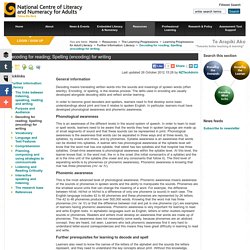
Encoding, or spelling, is the reverse process. The skills used in encoding are usually developed alongside decoding skills and reflect similar learning.